Search result


Some Images of an unannounced Samsung smartphone were published by Gizmodo Brasil today, and they may reveal the South Korea-based vendor's next hot handset. The all new Samsung Galaxy S3.
The quality of the leaked images is not very good, but the basic look of the device can be made out along with the presence of a wide home button and a unique oval-shaped glass panel covering the display. Gizmodo Brasil's source states that the model number of the phone is i9300 - which a BGR source has previously stated is indeed the model number of the Galaxy S III - and the device pictured reportedly features a 12-megapixel camera.
As rumored, the Galaxy S III is expected to feature a 4.8-inch 1080p HD Super AMOLED display, a quad-core 1.5GHz Exynos processor, 4G LTE, Android 4.0 Ice Cream Sandwich and an ultra-thin case made of ceramic, and Samsung will likely announce the new flagship smartphone during a press conference on May 3rd. Check these images carefully and let us know what you think.
source: gizmodo




A batch of test photos for the latest Samsung Galaxy S IV has been leaked, confirming in some way the 13MP rear camera. The photos registered a resolution of 4128 x 2322, which a 9.6 MP and a 13MP can take. It has also been divulged that it will introduce a feature called Orb, which enables 360-deg panorama shots.
A Samsung engineer allegedly states that the Orb may be better than the Photo Sphere and that the camera will have Facebook and Twitter integration. The photos have since been taken down from the Google+ account where they have been grabbed.
Also, there are unconfirmed reports the Galaxy S IV will likely use the Sony Exmor RS sensor, which is what Sony uses for its top-of-the-line smartphones. If this report were true, HDR imaging and recording will be possible and better quality on images taken in low light.
Source: androsym
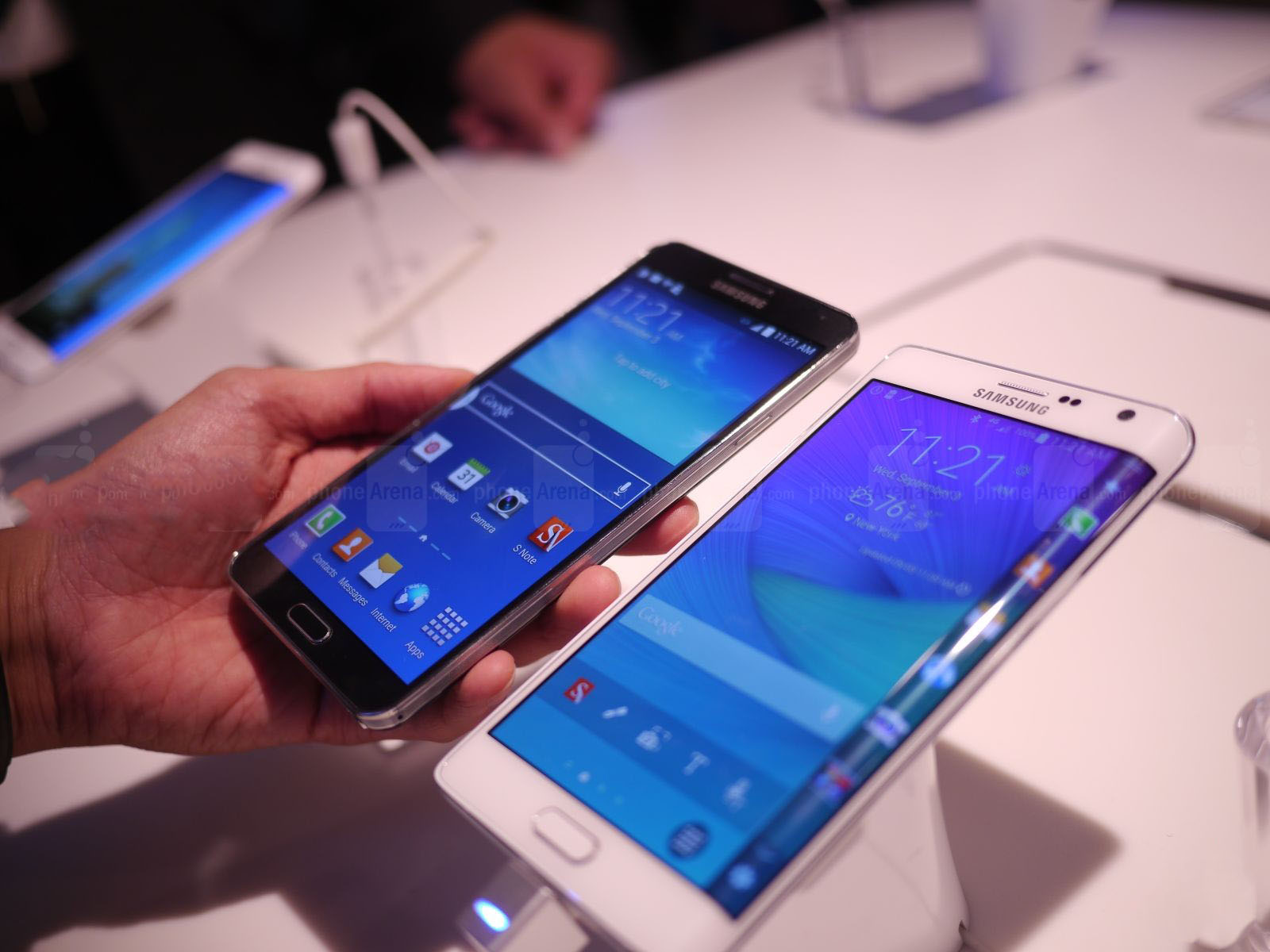
Samsung released Two Galaxy Note devices yesterday, The Galaxy Note 4 and the Galaxy Note 4 Edge. The Note 4 packs a QHD Display and a lot of powerful features, the Note 4 Edge packs a YOUM Flexible sAMOLED Display that makes a very useful curved screen to display messages while the devices is off or covered with its case. In this article we will Compare the Note 4 Edge with the Previous Galaxy Note 3.
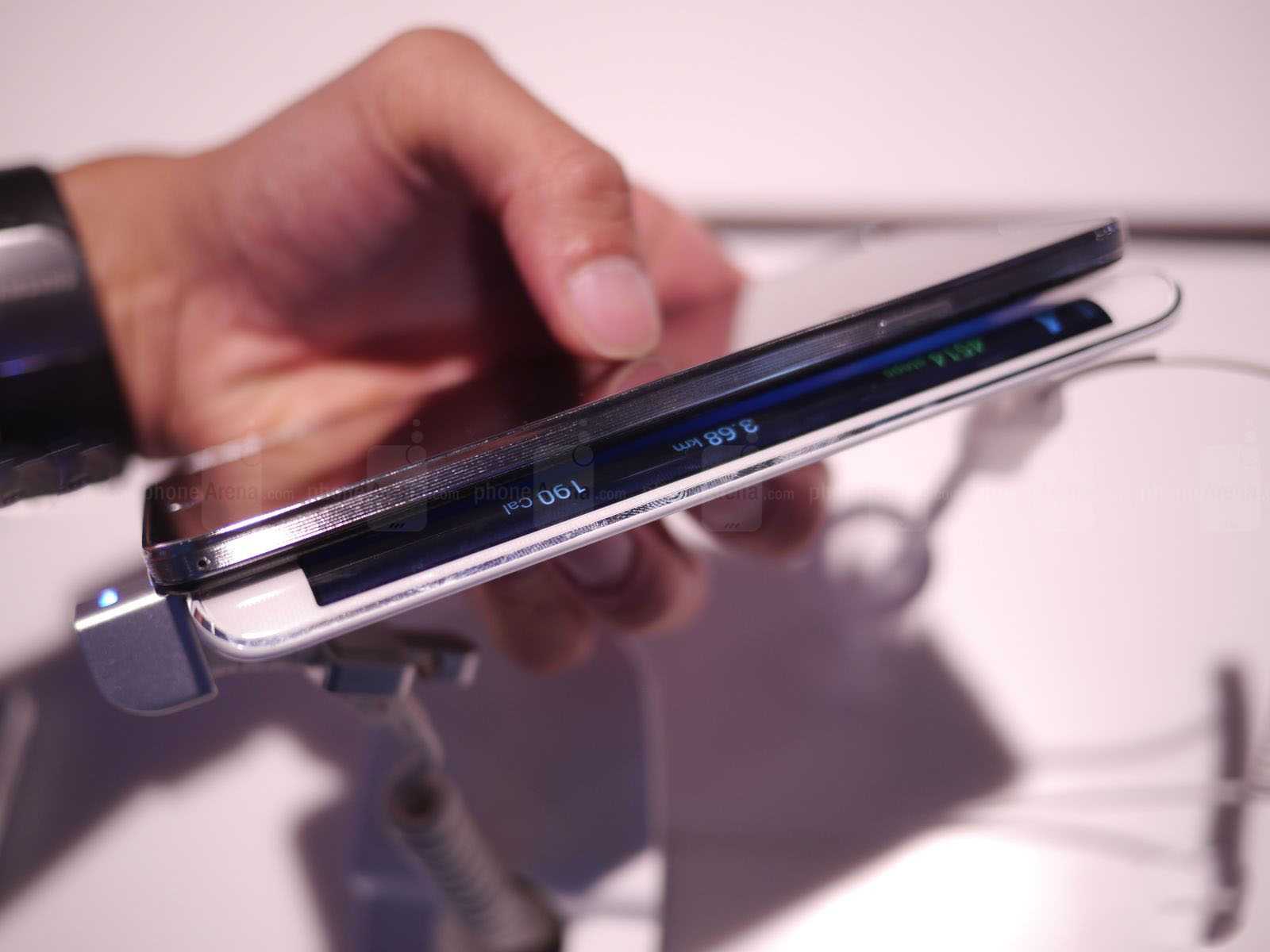
Design
With the Note Edge and Note 3, you've got two devices that are very alike in terms of their basic shape two rectangles with rounded corners. The differences, with the exception of the screen on the right edge of the former, however require a closer inspection. For one, the Note Edge is the first in the Note line (along with the new Note 4, that is) to sport metal in its build. Indeed, the frame is now made out of the sturdy material, instead of the plastic imitation present with the Note 3.
Looking at the back, we again have some subtle differences. For example, while both devices have a soft-touch, faux-leather backs, the Note Edge does away with the fake stitching that is present with the Note 3, and also adopts a slightly different (and nicer) pattern. Also different is the button placement on the Edge, and instead of housing both of these on the right side of the frame, Samsung has instead put the power button on top of the device, while the volume rocker has been moved to the left side. In terms of ergonomics, this is an unwelcome change, but the company obviously had to move them to make room for the side screen.
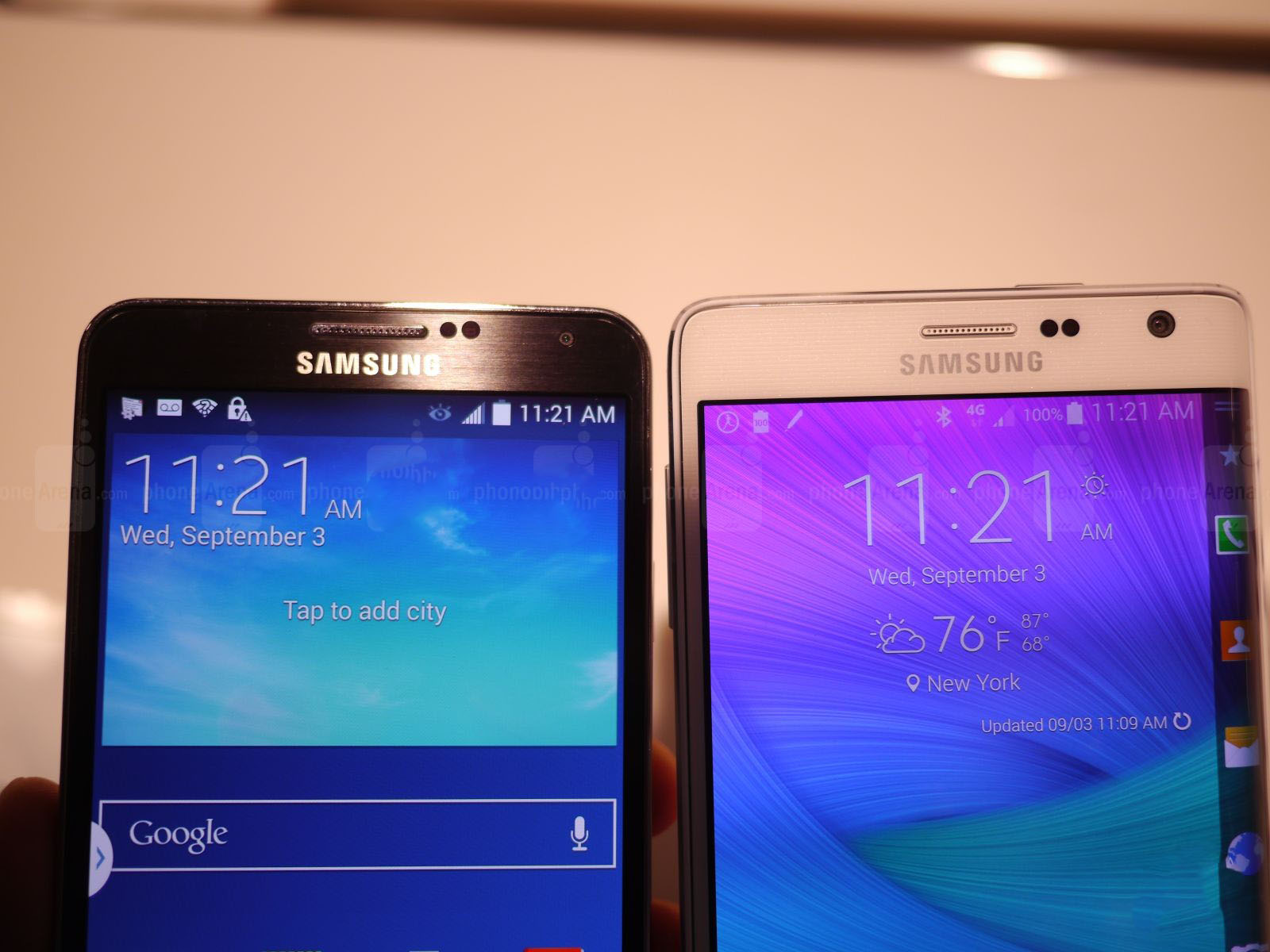
Display
The Samsung Galaxy Note Edge comes with a super-crisp, 5.6-inch Quad HD resolution (1440 x 2560) Super AMOLED display, good for the whopping 525 pixels per inch. In addition to that, Samsung has also set aside 160 pixels for the display on the edge, though we don't yet know its exact size (we guess about 1 inch). Thankfully, said tiny screen is not separate from the main one, so content seamlessly curves over to the side.
Looking at the Note 3, things are more tame. Last year's Note flagship makes use of a seemingly larger, 5.7-inch Super AMOLED display with a resolution of 1080 x 1920 pixels, or a ppi of 386. Obviously, if you count the side screen on the Edge, the two are pretty much on par in terms of screen real estate.
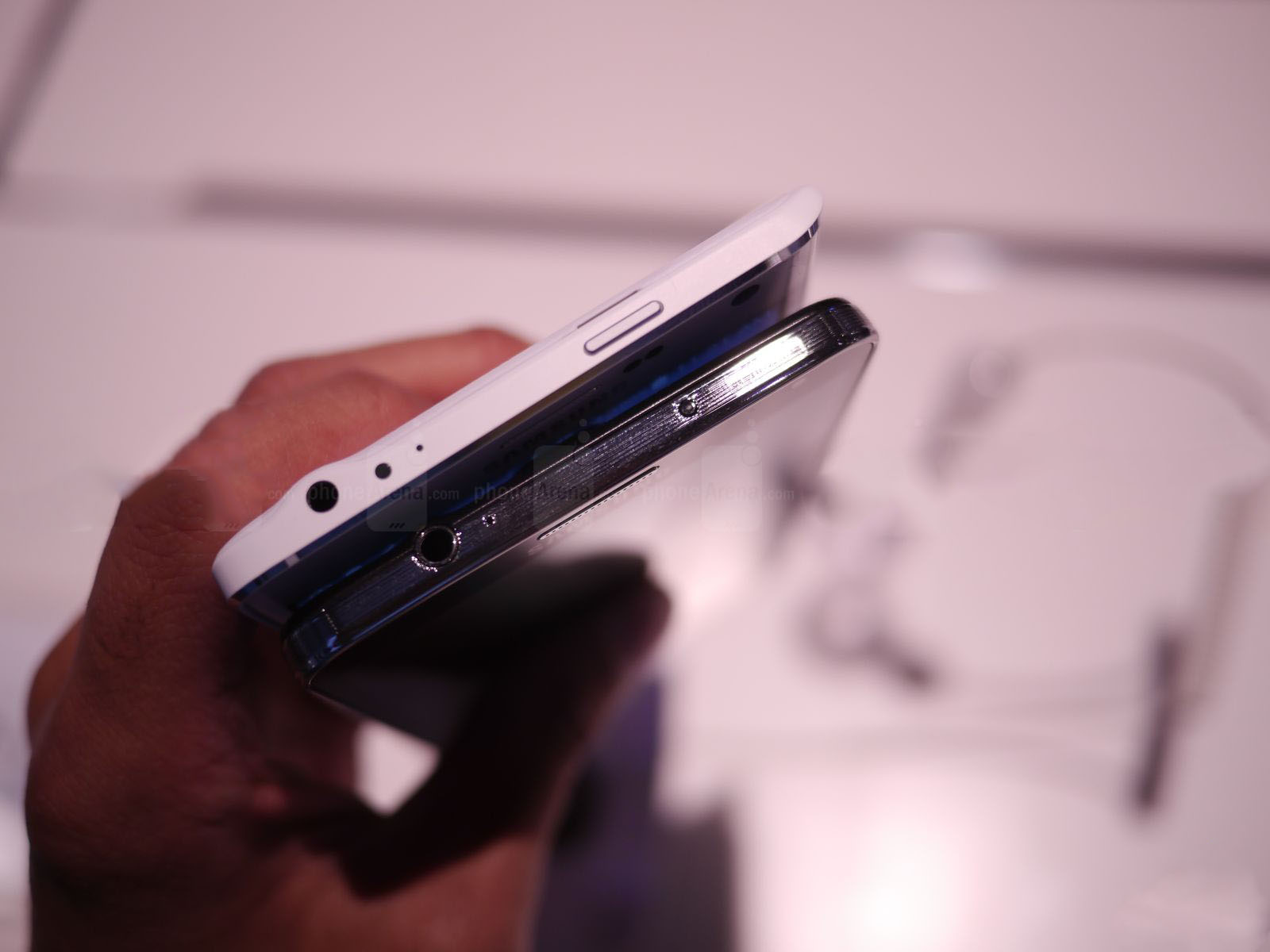
Interface and functionality
While both devices make use of Samsung's TouchWiz overlay based on Android 4.4 KitKat, the two differ visually. The reason for this is simple: Samsung simply didn't update the TouchWiz software of the Note 3 to the latest version available. Unfortunately for the Note 3, this means that we definitely dig the interface on the Note Edge, as it simply is more refined and far more attractive. In fact, in comparison, the UI on the Note 3 feels seriously outdated.
The Note Edge also scores a win in terms of functionality, and not solely based on the extra side screen, too. For example, it is equipped with a fingerprint scanner, which Samsung has embedded into the physical Home button, along with a heart rate monitor on the back, right under the camera. The Note Edge also has the very useful Ultra Power Saving Mode on board, allowing it to survive on little to no charge for very long time if you so need it to. Further still, the S-Pen stylus on the Note 3 is now inferior, as the updated version with the Note Edge has been tweaked. For example, not only does the display on the Edge allow for a more precise experience, but the amount of pressure you need to apply with its S-Pen is higher, so that it mimics the experience of writing on paper with a real pen better.
And, lastly, there's the side screen, of course. Many of the built-in Samsung apps on the Note Edge have been reworked to work in concert with it, so, for example, it'll display certain settings when the camera app is on, show music controls, and even display your missed notifications.
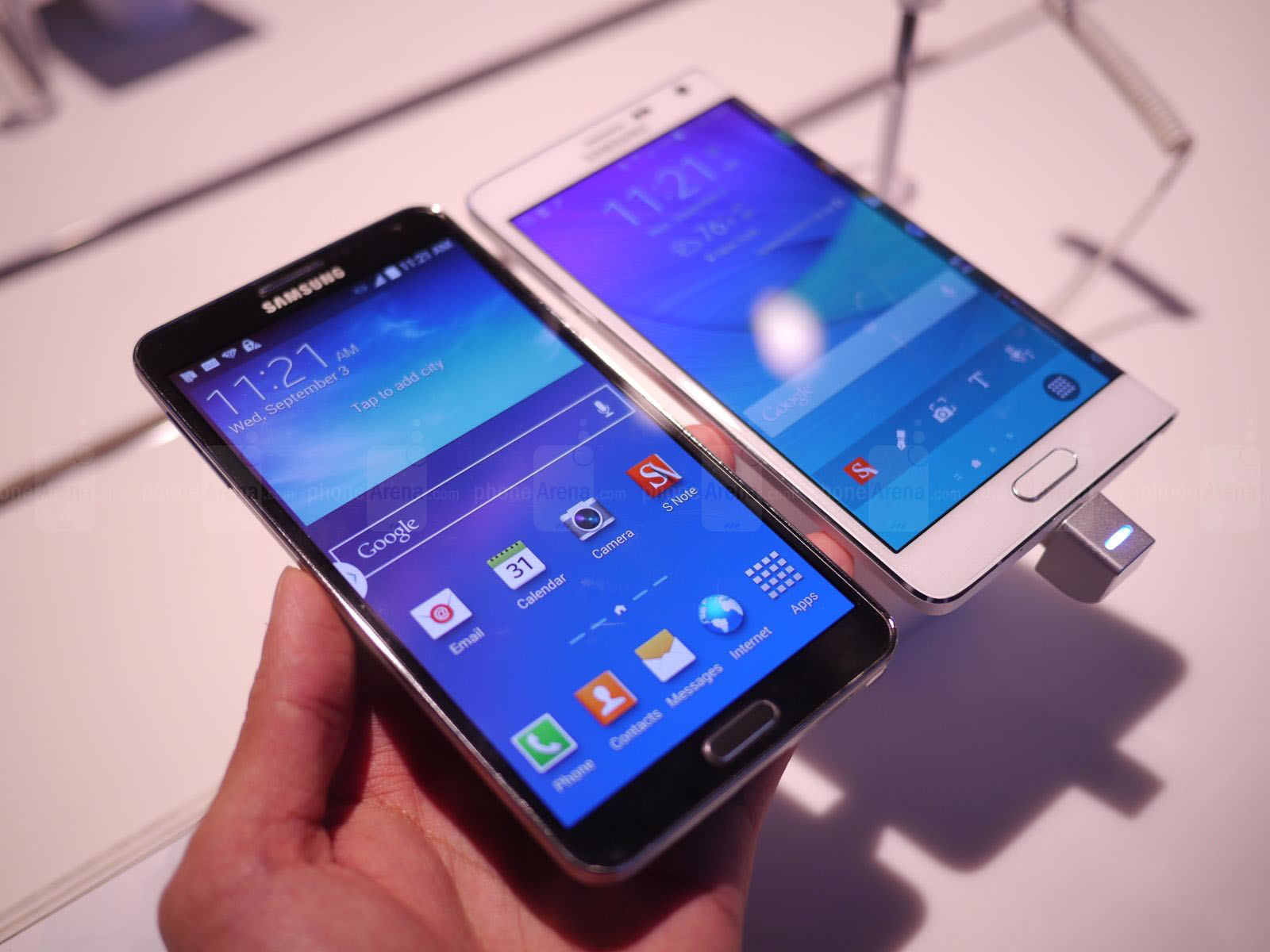
Processor and memory
The Galaxy Note Edge will come in two flavors one equipped with a 2.7GHz, quad-core Snapdragon 805 chipset with four Krait 450 cores and an Adreno 420 GPU, and another, with an octa-core Exynos 5433 chip from Samsung itself. The company's silicon utilizes two clusters of four cores one with power-efficient ARM Cortex-A7 cores and another with powerful ARM Cortex-A15 cores. Depending on the task at hand, the chip intelligently switches between the two, always trying to save power without degrading the user experience. If need be, the Exynos 5430 can mobilize all eight cores for those times when you need all hands on deck.
As for the Galaxy Note 3, it sports a now aging quad-core Snapdragon 800 chip. The still very respectable processor has four Krait 400 cores ticking at 2.3GHz and an Adreno 330 GPU. Obviously, this is an inferior solution to the SD805, but considering the more pixels the latter has to push, the difference in performance should be negligible to small.
In terms of memory, we've got a tie, with both devices boasting 3GB of RAM.
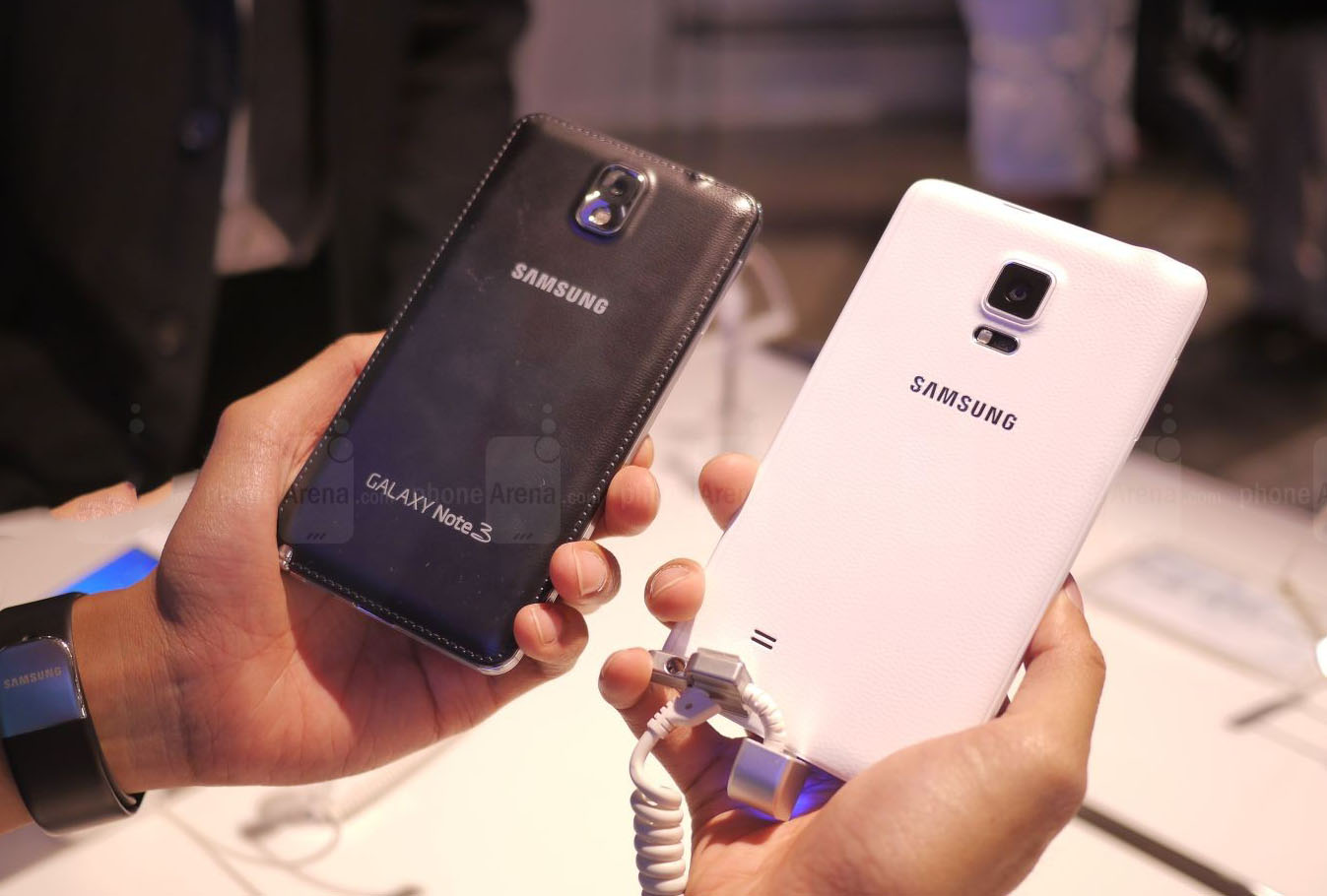
Camera
While we haven't yet had the chance to properly test out the camera on the Note Edge, let alone compare it with what competitors have to offer, it's hard to imagine that the Edge will lag behind the Note 3's camera in terms of overall performance.
The 16-megapixel, unit on the Edge makes use of what the company is calling Smart OIS, which combines the efforts of both an optical image stabilizing gizmo, and the built-in software's digital image stabilization. Overall, Smart OIS will help you take shake-free video, and will even aid you in taking better pictures in low light environments.
As for the Note 3, we've got an excellent 13-megapixel snapper, but optical image stabilization is nowhere to be found. Regardless, we'd say that the Note 3 is now time-tested, and we've been consistently happy with its performance it's no longer on top of the list, but it's handling itself very well even today.
----------------
Mo Cheng
Editor-In-Chief
YouMobile, Inc.


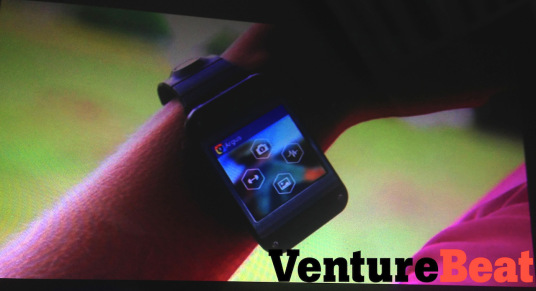
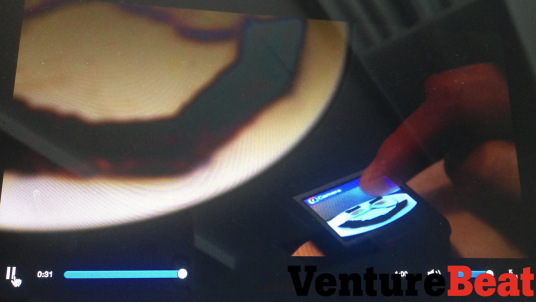
Samsung Galaxy Gear prototype leaked by Venturebeat who got to spend some time with the smartwatch. What you see above is a snapshot of a Galaxy Gear promo video, as the media wasn't allowed to take photos of the actual prototype it had. Anyway, the display of the Galaxy Gear is 3" in size and is of the OLED variety. The screen is square, but sadly its resolution wasn't disclosed.
Samsung Galaxy Gear itself is colored in dark gray and black and sports built-in speakers in the strap. Naturally, there'll be more colors on the way, but they weren't detailed. On the top side, there's also a 4MP camera, which is used to record health data as well as taking pictures. There's a special piece of software which recognizes if the food is fat or contains grains.
The site also claims that the Gear will have 10+ hours of battery life, something which was rumored recently and has made people look at it with disdain even before its upcoming official announcement. The Gear will connect to a smartwatch via Bluetooth, and also via NFC as we'd learned from the screenshot of the Gear Manager companion app.
IFA is just a couple of days away and the Samsung Unpacked event is promising to be a blast with the Galaxy Note III and Galaxy Gear smartwatch making their first official appearance.
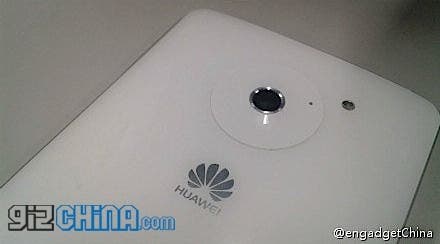
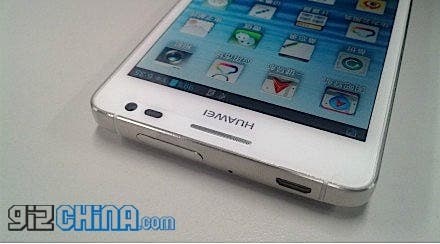
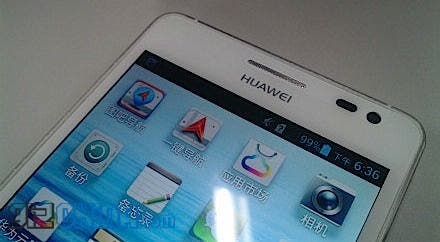
Huawei Ascend D2's specs has been leaked, featuring a 5-inch 1920×1080 Full HD touchscreen, a quad-core 1.5 GHz processor, a 13 MP rear camera, 1.3 MP front-facing camera, 2 GB of RAM, and a 3,000 mAh battery. It will run Android 4.1 Jelly Bean. However, unlike the other phones from Oppo, Nubia and HTC. Huawei have chosen their own ‘homemade' quad-core processor names the Hass K3V2 and clocked at 1.5Ghz.
GizChina claims the Ascend D2 measures in at 9.9mm, quite a bit more compared to 7.5mm ZTE Nubia Z5, and weighs about a rather heavy at around 170 grams. Could this extra girth and weight be as a result of much larger 3000mAh battery? We will have to wait and see.
Huawei are anticipated to launch the Ascend D2 in the first few weeks of January where it'll directly take on the Oppo Find 5 and Nubia Z5 and it is priced directly between those 2 phones at 3299 Yuan (528 US Dollars). Currently we are not sure on the internal storage or the possibility of LTE, definitely keep you posted.
Source: GizChina

Amazon during recent times has been involved in making new deals and getting up some new companies. But, in all it didn't notified one of the fantastic camera features it provides in its phones. This feature allows the users to snap photos and they directly get auto-saved to their online cloud account. This according to Amazon was one of the demanding features by phone users and users have welcomed this app positively.
Previously, the pictures were saved into the phone, now by introducing this feature it have has allowed time wastage in uploading photos to the cloud-drive. This feature is available on all versions greater or equal to Android 4.0.4. Other fascinating feature by Amazon included: the feature of multiple downloading and uploading to the users. All these apps can be downloaded at Amazon's official app store or at the Google play.

Facebook is always known for being quick to update bugs and additions from their interface and with the latest Facebook for Android version; there is a new feature to come out that will likely capture the attention of people who love to change their profile pictures quite often. Timeline was a recently added feature, shows a profile picture and a panorama shot that the user can easily change by logging on to their PCs. Now, the latest Facebook for Android allows you to do this using a smartphone.
You can check out the Google Play store for the update if you want this capability on your Android smart phone. Another feature is a notch at the top of a post to update for new comments. Swipe this notch down so you won't have to click the small notification icon on the top most screen of your Facebook mobile.

Photo-editing buffs will surely enjoy the release of the new Adobe Photoshop Touch that is optimized for smartphone use. This is a cheaper version of the Adobe Photoshop for tablets and it comes at $4.99. Everyone will enjoy its usual features such as layer editing, selection tools, various filters, effects and others that Instagram simply cannot provide.
Adobe has even provided a walk through for newbies, which eliminates the excuse not to buy the app. Also, anyone who buys it will get a free 2GB Creative Cloud storage. However, it is limited to photos that are up to 12MP, other than that, it works perfectly like it does on PC and tablet. It is available on Google play for download, so be sure to grab yours for better photo editing effects and techniques.

An updated version of Google Earth app is now available, one major change is integrating your own pictures with the cache of satellite imagery showcasing the globe in extreme detail. After signing in with your Google account, a new option for Google+ photos (under the More Maps dialog) will pin geotagged images to their point of origin on the map.
Google Earth app allows you to fly around the planet with a swipe of your finger with Google Earth for Android. Explore distant lands or reacquaint yourself with your childhood home. Integrated Google Maps Street View allow you to explore the world at street level. Browse layers including roads, borders, places, photos and more. Visit the Earth Gallery to find exciting maps such as real-time earthquakes, planes in flight, hiking trails, city tours, and more.
Use the new "tour guide" to easily discover exciting new places to explore. With a quick swipe on the tab at the bottom of the screen, you can bring up a selection of virtual tours from around the globe.
With new 3D imagery, you can now fly through complete 3D recreations of select cities, including San Francisco, Boston, Rome, and others. With every building modeled in 3D, you truly get a sense of flying above the city. 3D imagery is available on select devices, including most tablets.
You can easily navigate with your fingers, using:
- * A one finger swipe to move the globe
- * A two-finger pinch and rotate to zoom in and out and rotate your viewpoint
- * Two-fingers swiped together to tilt your view
- * A one-finger double-tap to zoom in
- * A two-finger double-tap to zoom out

It's not even a question how Google will be able to create an application or an Android feature that lets it integrate weather conditions with photo editing. It's only a matter of when Google will implement it. In fact, it has already patented the idea and what it would do is to automatically adjust a person's photos instantly, depending on the lighting and weather conditions where the shot was taken, as well as weather forecasts in that particular area. Cool, eh?
Using this feature, Google plans to approximate your location based on information from cell towers nearest where you are at the time of the photo shoot. Also, GPS location can be a source for the weather info. Photos can then be adjusted accordingly.
With these future innovations from Google, the Android OS is really set to becoming a better and more exciting platform than it already is.
© 2023 YouMobile Inc. All rights reserved





